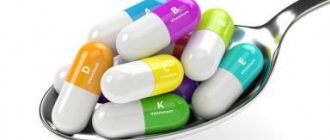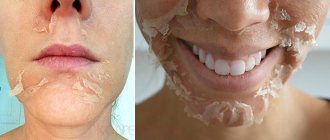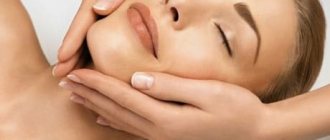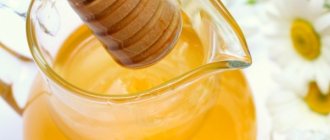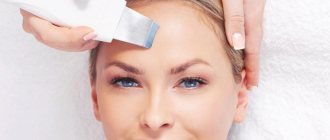Why is the skin color yellow? Why skin may turn yellow
Jaundice is a medical term that describes the yellowing of the skin and visible mucous membranes.
The phenomenon itself is not considered a disease, but a symptom of several possible more serious diseases. Jaundice begins when there is an increased level of bilirubin in the system - this is a yellow pigment that is formed after the breakdown of dead red blood cells in the liver. As a rule, the substance leaves the body with old red blood cells. Jaundice may indicate a serious problem with the function of the liver, gallbladder, or pancreas. It begins with a change in the color of urine and stool. The urine becomes dark and the stool becomes light. Then the mucous membranes are stained, then the skin.
Jaundice occurs due to hepatitis, hemolysis of red blood cells, and obstruction of the outflow of bile. If you eat a lot of foods containing beta-carotene, your skin may turn yellow.
Under the supervision of a doctor, you can correct yellowed facial skin,
if the diagnosis is serious. And if neither the tests nor the examination reveal any serious abnormalities, then in a simple way you can return the beige color to your face and white to your eyes.
First of all, it is diet. For at least a month you should eat only:
- Dietary white meat
- Protein products: milk, eggs, cheeses, legumes
- Vegetables: cauliflower and white cabbage, cucumbers, zucchini, boiled and raw potatoes, greens
- Fruits: bananas, apples, pears, black plums
- Cereals: semolina, oatmeal, pearl barley
- Drink: water, white and green tea, birch sap, mineral water
Vitamins must be taken separately. Your attending physician will tell you which ones you need.
The second stage is masks for skin whitening. If your skin and eyes turn yellow,
you need to remove the yellow pigment as quickly as possible. On its own, the yellowness will fade in spots, which will further highlight the wrong color.
The very reasons why eyes and skin turn yellow can be either almost harmless or very dangerous. Yellowness of the skin is caused by the substance bilirubin. It is formed when hemoglobin breaks down. The whites of the eyes may have a yellowish tint or a sunny yellow color from the breakdown of red blood cells. It happens that the skin and eyes are yellow due to the usual overabundance of products with coloring pigments.
Sleep and overload
Lack of sleep disrupts all functions in the body. Yellow facial skin often occurs in people with unstable work schedules. And office workers who for months do not see any light except the radiation of the monitor. Neither overload can provoke yellowness. Even the whites of the eyes change color due to stress.
It is enough to have a good rest, spend at least 4 hours a day outside and not carry heavy things, so that the complexion and eyes are restored.
Dyes
Chemical or natural, dyes are absorbed into the skin. After dyeing your hair, your scalp will be yellow for several days. Dyes introduced into the blood through food or smeared on the skin can affect the whites of the eyes. Chefs get yellow skin on their hands after working with colorful products,
You just need to wait a couple of weeks and switch to eating fresh vegetables, make a few whitening masks. The dye will leave the body on its own.
If these organs begin to collapse, you need to urgently seek qualified help! Clogged bile ducts cause an excess of bile. It can destroy the digestive tract.
The liver suffers from almost everything that surrounds us. It cleanses the blood and receives the first blow from alcohol, tobacco, and carcinogens. Medicines accumulate in the liver and remain there for a long time. Or it may be that a person has contracted viral hepatitis A, the so-called “Botkin’s disease.” In common parlance - jaundice. Although in fact there are jaundices that are different from hepatitis.
Changing the shade of the whites of the eyes occurs for many reasons.
The most common cause of eye color change is jaundice.
Depending on the level of excretion of bilirubin (the main component of bile) and the factor that provokes yellowing of the sclera, several forms of this disease are distinguished:
- Mechanical - occurs when the bile ducts are blocked by stones or a tumor, when the outflow of bile into the cavity of the duodenum is disrupted: bilirubin is not processed, but enters the blood (first the skin turns yellow, and then the whites of the eyes).
- False - may appear after eating a large amount of carrots, beets, or taking medications (the disease does not need to be treated: it goes away on its own).
- Hemolytic – a consequence of the accelerated breakdown of hemoglobin. The liver does not have time to process the bilirubin contained in it: it is absorbed into the blood and carried through the blood vessels to the tissues of the body.
- True – occurs when liver tissue is damaged. The organ does not process bilirubin well: it is not excreted along with bile, but circulates freely in the blood. Through the capillaries, the enzyme enters the eye tissue and it turns yellow. Factors that provoke liver destruction include: viruses, toxins, tuberculosis, alcohol.
If a person has yellow whites of the eyes, the reasons for the change in their color may be not only diseases of the liver and visual system, but also other factors:
- bad habits (smoking, alcohol abuse);
- improper diet;
- eye strain while reading in poor lighting or working at the computer;
- lack of proper sleep.
There are many reasons why the whites of the eyes turn yellow. But sometimes this color of the organs of the visual system is not a sign of pathology and does not require therapeutic measures (congenital yellowness of the whites of the eyes, infant jaundice).
Good afternoon, dear homebodies. What if you suddenly turn yellow? No, most likely, your Chinese blood has not awakened in you. Let's look at the reasons. If you notice a sudden (in less than 7 days) yellowness of the sclera, skin, and itching, then most likely there is a more prosaic and serious reason here. Why did the skin turn yellow?
- Does the skin turn yellow with hepatitis? Hepatitis AGE Hepatitis B Hepatitis SS See Skin turned yellow due to poisoning What disease caused the skin to turn yellow? What to do if the skin and eyes turned yellow?
Hepatitis A
If you returned from Egypt or Goa and about two or three weeks passed, and then suddenly turned yellow, your urine became too dark, then most likely, along with the water you consumed there, you also absorbed the hepatitis A virus, also known as Botkin’s disease.
Of course, at present this disease is well treated, but, you see, it’s unpleasant when your own liver is being destroyed and your skin is yellow and itchy. There are practically no consequences after this disease with timely and sufficient treatment, but this will not happen without long visits to clinics and hospitals and registration at a dispensary.
Hepatitis B
This hepatitis virus is most often transmitted through blood. Most people have been vaccinated against hepatitis B. But due to the popularity of vaccine refusal, it is very easy to catch hepatitis. The most negative aspect of this disease is its transition to the chronic stage and the formation of liver cirrhosis.
Hepatitis C
Removing yellowness with folk remedies
If you notice that your skin is turning yellow, pay attention to other symptoms. Below are the possible causes (diseases) that cause the skin to turn yellow. In any of these cases, it is worth seeking medical help and conducting examinations.
Jaundice in adulthood often indicates:
- alcohol abuse;
- liver infections;
- liver cancer;
- cirrhosis (liver fibrosis, often due to alcohol);
- gallstones (cholesterol stones from hardened fatty material or pigment stones from bilirubin);
- hepatitis (disease and swelling of the liver, which reduces its ability to function);
- pancreatic cancer;
- parasites in the liver;
- hemolytic anemia (rupture or destruction of red blood cells, which causes a reduction in the number of red cells in the circulation, leading to severe fatigue and weakness);
- an adverse reaction or overdose of a drug such as acetaminophen (Tylenol).
Yellow skin is also common in babies who are born prematurely. Excess bilirubin can occur in newborns because their liver is not yet fully developed. Bilirubin is a yellow pigment formed by the breakdown of old cells. Jaundice begins when the liver does not metabolize bilirubin as well as it needs to.
The organ may be damaged and in this case is not able to carry out the natural process. There are cases when bilirubin is not able to enter the digestive system, from which it is freely excreted along with the stool. In other cases, there is too much bilirubin trying to leave the liver at once, or too many red cells being destroyed at once.
We invite you to familiarize yourself with anti-aging face masks with cottage cheese
Hepatitis C is a consequence of liver damage from the hepatitis C virus (HCV), which is transmitted into the human blood. It is spread through contact with contaminated blood, such as contaminated needles, toothbrushes and razors, unprotected sex with an infected person, and from mother to child during childbirth.
Mononucleosis is a clinical syndrome characterized by fever, sore throat and swollen lymph nodes. The diagnosis is confirmed by searching for antibodies against viruses that cause mononucleosis. In infectious mononucleosis, the liver and spleen are affected, and moderate jaundice is possible.
Severe pain is a hallmark of sickle cell disease. They are caused by a blocked blood vessel. Patients may develop jaundice.
Gallstones
Gallstones are hard deposits that form in the gallbladder. Symptoms: nausea, loss of appetite, pain in the right hypochondrium, jaundice.
Hereditary spherocytosis is a condition in which red blood cells change. People with this condition usually have a lack of red blood cells (anemia), yellowing of the eyes and skin (jaundice), and an enlarged spleen (splenomegaly). Symptoms: fatigue; pain (stomach pain); fever; general abdominal pain; yellow skin.
Cholecystitis is inflammation of the gallbladder. The organ contains bile (digestive juice). Gallstones can form when it becomes thick (the stones block the gallbladder and cause inflammation). Ignoring medical attention often results in the bladder rupturing and causing a fatal infection in the abdomen. Symptoms: pain (abdominal pain); nausea; loss of appetite; diarrhea; constipation.
It is a serious liver disease. The organ is necessary for metabolic processes and is responsible for filtering and purifying the blood. If you notice yellowing of your skin, you should not put off going to the doctor. Possible symptoms: fatigue; loss of appetite; nausea or vomiting; abdominal pain; unintentional weight loss.
Foods rich in carotenoids can give your skin a healthy glow.
It also happens that yellow is a bad color. Vivid skin and yellow mucous membranes are a sign of serious illness. Jaundice occurs when there is a problem with the normal dynamics between blood cells and the liver. Blood cell membranes become more fragile with age and must eventually be removed from the body.
Bilirubin is what gives bruises their yellowish tint as they heal. The liver usually contains a lot of blood cells, but if there is an abnormal number of old red blood cells entering the liver and the liver is not functioning properly, or bilirubin cannot be cleared from the digestive tract, this can lead to an excess of them in the body and cause jaundice.
This condition must be noticed in time. Jaundice usually goes away when the underlying cause is treated. The duration of the procedures depends on the general condition of the patient. Seek immediate medical attention as this may be a sign of a serious illness. Mild jaundice in newborns usually goes away on its own without treatment and does not cause long-term liver problems.
Sources
- Bondar Z. A. Jaundice. – M., 1965
More fresh and relevant information about health on our Telegram channel. Subscribe: https://t.me/foodandhealthru
Author of the article:
Izvozchikova Nina Vladislavovna
Specialty: infectious disease specialist, gastroenterologist, pulmonologist.
Total experience: 35 years.
Education: 1975-1982, 1st MMI, San-Gig, highest qualification, infectious disease doctor.
Scientific degree: doctor of the highest category, candidate of medical sciences.
Training:
- Infectious diseases.
- Parasitic diseases.
- Emergency conditions.
- HIV.
A yellow complexion is a consequence of an excess of bilirubin in the body. It is a pigment produced by the decomposition of dead red cells in the liver. Most often, yellowing of the skin indicates problems with liver function. But sometimes this phenomenon is the body’s reaction to changes in diet. What else does a yellow complexion indicate and is it always dangerous to health?
A common cause of a pale yellow complexion is unlimited consumption of salads high in carrots and carrot juices. Yellowness of the skin can also appear when there is an excess of carotene in the body. This happens if you eat a lot of yellow fruits and vegetables that contain this substance, for example, tangerines and oranges. Accumulation of bile is caused by spices such as cumin and cumin. You should not use them in large quantities when preparing dishes.
Very often, a yellow complexion is observed during fasting and alcoholism. People also encounter this problem after:
- strong physical activity;
- long-term depression;
- regular lack of sleep;
- long exposure to direct sunlight.
If the skin color is pale yellow and there are yellow spots on the iris of the eye, most likely lipid metabolism in the body is disturbed and cholesterol is significantly increased. Yellowness also occurs with cancer.
In cases where the skin tone becomes yellow-orange, you should consult an endocrinologist. This may be a symptom of hypothyroidism. With this disease, the functioning of the thyroid gland is disrupted and there is an insufficient amount of substances in the body that process beta-carotene. As a result, carotene accumulates in subcutaneous fat.
Slight yellowness is usually observed in patients with damage to the spleen and stomach and in those who are obese.
As a rule, with these ailments, in addition to yellowing of the skin, the patient experiences pale stools, abdominal pain and dark urine.
The reasons for this phenomenon may be related to liver damage by parasites. A yellow complexion is observed with the appearance of cysts. In some cases, the face turns yellow due to primary inflammatory, purulent and functional damage to the liver cells, for example, hepatitis (viral or toxic), steatohepatosis and liver abscess.
One of the common causes of a yellow complexion is diseases of the hepatic veins. These include:
- Budd-Chiari syndrome;
- intrahepatic arteriovenous fistulas;
- portal hypertension;
- pylephlebitis (purulent inflammation of the portal vein).
The reasons for the appearance of a pale face and bruises under the eyes are simple. Such conditions are associated with impaired microcirculation in small vessels of the skin, which leads to a decrease in blood supply and causes pallor. It is important to remember that a pale complexion in a child and an adult is not an independent disease, but reflects an existing disease in the body. There are a number of main reasons:
- , is the main disease characterized by the appearance of paleness of the face and bruises under the eyes in humans. As a rule, this condition occurs in childhood. When there is an imbalance in the functioning of the autonomic nervous system, the skin becomes pale or even “marbled”. In the latter case, spots with a pronounced vascular pattern appear against the background of areas with a whitish tint. With vegetative-vascular dystonia, a person experiences symptoms: changes in blood pressure, pain in the chest like “angina pectoris”. This disease is associated with disruption of the autonomic parts of the brain and requires an individual approach to each patient.
- Impaired blood supply to the brain leads to changes in the regulation of the tone of the vascular bed of the body, including the arteries of the face. The condition is accompanied by the appearance of facial pallor in children and adults.
- Chronic, acute stress, sudden fear, sharp emotions lead to the appearance of paleness of the face, which is associated with a change in the functioning of the autonomic nervous system.
- Anemia (a condition accompanied by a decrease in the amount of hemoglobin and red blood cells in the blood) is characterized by constant pallor of the skin of the face and the appearance of dark circles under the eyes in children and adults.
Bilirubin and liver disease
Perhaps your face has a yellowish tint because you have problems with your liver, which makes it difficult for you to remove the pigment bilirubin from your body. What liver diseases are we talking about specifically? About quite serious ones, namely:
- Various forms of hepatitis.
- Cholecystitis.
- Kistah.
- Cirrhosis.
- Helminths (or simply worms).
We invite you to familiarize yourself with Facial Toner (differences from toner, what is it for, how to use)
In the presence of these diseases it is also common:
- The urine becomes very dark and the stool turns pale.
- Appetite is almost completely absent, weight decreases sharply.
- Often feels hot and cold (or, in other words, has a fever).
- Severe pain in the abdominal area.
If this is about you, don’t hide under the covers (you’re already an adult) and urgently run to take a blood test to check your bilirubin levels.
Bilirubin causes yellowing of the skin color and the white of the eye.
arrow_left
Bilirubin causes yellowing of the skin color and the white of the eye.
Another useful article: Eyelids swell in the morning: what is the reason?
The thyroid gland helps break down the pigment beta-carotene. If for some reason she does not do this, beta-carotene begins to accumulate in the body (or rather, in subcutaneous fat), and the color of the skin on the face becomes yellowish-orange. Most often this happens when a person has hypothyroidism (deficiency of thyroid hormones).
Your face may turn yellow due to:
- Diseases of the pancreas (primarily pancreatitis).
- Heart and blood pressure problems.
- Diseases of the spleen.
- Various ailments of the gastrointestinal tract.
- Various oncological diseases. With such ailments, the face becomes “waxy” and acquires a cold yellow tint.
Thyroid hormone deficiency is the cause of an “orange” face
Thyroid hormone deficiency is the cause of an “orange” face
Jaundice in cancer is a serious complication that is practically not amenable to drug treatment. The mechanism of formation of jaundice in oncology is quite simple and understandable: the cancerous tumor grows, gradually squeezing not only the blood vessels, but also the internal and external bile ducts. As a result, bile simply has nowhere to go, and it begins to accumulate in the vascular bed.
if before this the skin was pink, physiological, and perhaps pale, characteristic of oncological pathology, now it is yellowish, and sometimes nuclear yellow. If we are talking about a slight change in skin color, then relatives and the patient himself often mistakenly take this phenomenon as symptoms of some kind of improvement - the body’s adaptation to cancer; but in fact they have crossed another stage in the development of cancer.
One of the most common causes of a yellow complexion is liver dysfunction. Such diseases include cirrhosis, hepatitis or helminths.
For this symptom, the doctor prescribes a blood test, which usually detects bilirubin. Based on the results obtained, the doctor finds the cause of the yellow complexion and prescribes the correct treatment. Please note that liver problems can be avoided if you eat right, lead a healthy lifestyle and do not abuse alcohol.
Wrong lifestyle and bad habits
Are you addicted to cigarettes and still live in an ecological disaster zone in a metropolis? In this case, the gray color and facial sagging are easy to explain. Quit smoking and get out into nature more often. Then the amount of carbon monoxide in the blood will decrease, the blood vessels will dilate, the pores will clear, and the skin will breathe easier.
If quitting smoking is an impossible task for you, then in cosmetics and food, rely on products rich in antioxidants that neutralize nicotine well. In this case, your face will not turn gray.
You may also be interested in: Dyeing eyebrows with henna at home
You're eating wrong
You eat whatever you can, whenever you have to. You eat up before going to bed. Do you like to eat on the go? But have you forgotten that a person is what he eats? We are all literally made up of what we eat. You can't joke about this.
Another interesting article: How many calories are burned when running?
A slender figure is, of course, good, but with a gray complexion it will be of little use. Try not to depend on new-fangled diets and get everything you need from food, even if it adds a little fat to your thighs.
Another useful article: Peeling eyelid: causes, associated symptoms and treatment
You're addicted to coffee
Excess caffeine ages the skin and makes it dull.
You might be interested in: How to paint eyelashes with paint: step-by-step instructions
For your skin color to acquire one of 50 shades of gray, regular drinking of “harmless” light beer is enough.
You might be interested in: What you need for face makeup: a list of tools and cosmetics
You live a life filled with stress, nervousness, and unnecessary experiences. Here, perhaps, you cannot do without a psychologist. It will help you reconsider your priorities, remove everything that puts too much pressure on your psyche, and at the same time makes your skin color look bad.
Another useful article: Why wipe your face with ice
You sleep little
You don't get enough sleep, you go to bed too late. This disrupts the natural cycle of skin regeneration, and the face turns grey. It is not difficult to fix such a problem. Just take a bath before bed, walk in the fresh air and go to bed no later than 11.
It will also be useful: How to wash your face with eyelash extensions
You are "hypodinam"
You have fallen victim to the epidemic of the digital age - a sedentary lifestyle, or scientifically speaking, physical inactivity. This means that due to long periods of sitting, your spinal and cervical nerves are compressed and the blood supply to your head is disrupted. Massage helps solve this problem. You'll also have to go on a low social media diet. Well, put your body to work - do exercises, jog in the morning, visit the “rocking chair”: then the color of your skin will become “sexy” again.
You may be interested in: Akkura honey - what is it?
You're in love with a tan
You overuse artificial and natural tanning. Excess ultraviolet radiation makes the skin flabby, covers it with senile pigmentation, dehydrates and deprives it of freshness.
It will also be useful: Why do acne appear on the chin and how to deal with it
Start using moisturizers regularly and use suitable toners. Don't forget to protect your skin from the sun's ultraviolet rays. At least once a week, clean it with scrubs to remove all dead particles and remove excess sebum. Be sure to apply whitening and nourishing masks.
It is advisable to turn to professionals. They might recommend:
- Chemical (superficial) peeling. Chemistry in this case is various acids (fruit, glycolic, enzyme).
- Ultrasonic peeling. Ultrasound removes dead cells absolutely painlessly.
- Facial massage. It will eliminate tension in the occipital and cervical areas, make the skin more elastic, and restore its normal tone.
- Ozone therapy. Thanks to this procedure, the skin is well saturated with oxygen.
Ultrasonic peeling can restore beauty to the skin
Ultrasonic peeling can restore beauty to the skin
Always remove all makeup before going to bed. And in the morning, before applying makeup, be sure to use some kind of toner.
Old age and winter
Winter is unmerciful to the skin: the cold wind dries them out, and radiators in warm rooms do the same. Lack of sun rays and vitamin deficiency complete the matter.
Or maybe you're just getting old. Cell regeneration slows down, menopause sets in, the skin becomes drier, its color fades... But life goes on. The beauty and wellness treatments just mentioned will help you rejuvenate your skin.
Don’t try to “disguise” the grayness of your face with blush or foundation. This will be of little use, and in addition, the skin will begin to peel off, and yellowish pigmentation may appear.
By the way, read about whitening masks in the article How to get rid of age spots on the face.
When should you see a doctor?
Many people do not notice that the skin has begun to turn yellow and seek help only in cases where the yellowness becomes obvious. In order to know whether you need to go to the hospital, you need to answer a few simple questions. The doctor asks exactly the same questions when determining the diagnosis. Questions a specialist may ask about yellow skin are:
- Have you experienced nausea?
- Have you had a fever today or within the last week?
- How's your appetite?
- Have you felt more tired than usual, sick, or unable to do anything despite getting enough sleep?
If you answered “yes” to one or more of these questions, get your body checked.
When yellowing of the skin appears, first of all you need to listen to the general condition of the body. If no symptoms are observed, perhaps the cause lies in poor diet and digestive problems. If skin pigmentation does not subside within several days, a person should consult a therapist.
Depending on the disease, the patient will need the help of doctors of a more narrow specialization:
- gastroenterologist;
- infectious disease specialist;
- hematologist;
- endocrinologist.
Purple spots on the body with a blue tint - what are they, reasons, how to treat
Human skin is an external protection against the effects of environmental factors.
In case of any malfunctions in the body, symptoms immediately appear on the skin indicating their presence. Usually pimples, spots, and roughness appear on the skin. Each of them indicates a particular disease in the body. In this article we will talk about the phenomenon of purple or blue spots on the body.
Types of blue spots on the skin
The formation of blue spots on human skin can be the result of various diseases.
Depending on whether these spots have been on the body for a long time or have just formed on the skin, they can be divided into several subgroups:
- Those that were present at birth (congenital);
- Arise immediately after birth (acquired);
- Arising from damage to blood vessels (vascular);
- Arising from a disorder of skin pigmentation (pigmentation).
Vascular spots - causes and treatment
Their colors vary from red to purple (blue), from brown to yellow. The color of the formations directly depends on the thickening of the blood and its concentration, in what state and where this concentrated area is located: in a vessel or the blood has already entered the tissue or is still localized in the bloodstream.
Vascular spots are divided into:
- associated with one-time vascular dilation;
- hemangiomas are formations consisting of a bundle of tiny capillaries;
- hemorrhagic - formed as a result of capillary breakage and blood splashing into the tissue, contributing to the appearance of a bluish spot.
A purple or blue mesh on the epidermis indicates that these are ordinary hematomas, colloquially called “bruises”; when a person hurts himself, a purple-bluish spot forms at the site of mechanical damage.
Most often, they go away after some time without any special treatment, leaving not a trace on the body. If the bruise is painful or swollen, you can use any ointment that has absorbable properties, for example: Troxevasin.
If we talk about effective folk remedies, then in this case, bodyaga will help.
The ointment should be applied directly to the site of the bruise and rubbed in with light movements two to three times a day, and the bodyagu should be used as a lotion until the bruise completely disappears.
This type of stain that appears on the human body is one of the safest for health.
Which doctor should I contact if blue spots appear?
In all other cases of this kind of spots, it is necessary to urgently consult with doctors who will tell you how and how to treat them:
- Dermatologist;
- Dermato-venereologist;
- Allergist;
- Hematologist;
- Infectious disease specialist;
- Surgeon;
- Oncologist,
who, after diagnostics and research, will make the correct diagnosis, find out the cause and origin of these formations, and also prescribe adequate therapy aimed at eliminating the root cause.
Red spots may be the result of an allergic reaction to unnatural fabrics, contaminated water, aggressive detergents, or food. In this case, the allergist may prescribe antihistamines upon visual inspection or after testing.
Lilac spots, if they are not the result of tattooing or pregnancy, must be diagnosed. During pregnancy, spots of this kind form at the site of so-called stretch marks (skin, characterized by insufficient elasticity and special elasticity, can stretch greatly as the fetus grows in the womb).
If the spots do not disappear, but rather grow or bleed, you should immediately consult a doctor for advice.
The etiology of spots of this color can be very different; it can be a sign of genetic diseases, as well as pathological changes in the body.
Diseases that cause purple spots
There are currently many reasons that contribute to the formation of purple spots on the body in the body. There are quite a few diseases in which one of the pronounced visible symptoms is the formation of purple spots on a person’s arms, legs or face. Some diseases are noted:
Livedo
Livedo or marbled skin syndrome (the skin has a purple tint) is characterized by a bluish coloration of the skin, resembling a kind of purple mesh in appearance, which can indicate tuberculosis, lupus erythematosus, heart disease and others.
If its appearance is considered a symptom of any of the listed diseases, then treatment will be aimed specifically at them, and in parallel, you should start taking vitamin complexes containing vitamins PP, P, C.
Flaming nevus
It is characterized by purple to blue spots with which the baby is born. They often form in the womb and are called nevi. Flaming nevus is present in the body both in a newborn child and in an adult. Sometimes it appears as one small spot, and in other cases the formation occupies half of the body.
- Firstly, such spots, if they are on the face or hands, that is, on parts of the body visible to prying eyes, cause great discomfort and inconvenience to their owner.
- It is necessary to know and remember that under no circumstances should you expose them to injury, much less try to remove them yourself, outside the hospital, since any neoplasm can degenerate into a malignant one.
Kaposi's sarcoma
It is characterized by nodules whose color varies from purple to violet. They can be single, or they can merge together. This disease affects people suffering from a significant decrease in immunity: HIV-infected people, old people, young children.
Treatment of the disease is usually expressed in the elimination of clinical manifestations and alleviation of the patient’s condition.
We recommend:
Causes of white spots on the skin;
Red spots on the body - treatment;
Pink spots on the neck – https://ozude.ru/skin-rashes/krasnye-pyatna-na-shee/.
Other reasons
- Vitamin K deficiency due to vitamin deficiency. Most often, this condition is observed in children; on the fifth or seventh day, with a lack of vitamin K, the baby may develop a hemorrhagic phenomenon.
- Thrombocytosis is a blockage of venous vessels, characterized by the appearance of blue-violet patterns or spots on the human skin. After consultation with a doctor, you can use Troxevasin tablets and ointment for treatment.
- Leukemia is a blood cancer.
With this serious disease, one of the symptoms is bruising. - Cobb syndrome is the presence of multiple birthmarks on the patient's body from pink to darker shades.
The list of these diseases is far from complete, since purple (blue) spots may indicate other changes in the human body.
Therefore, for successful treatment, it is necessary to undergo diagnostics in the clinic and fulfill all the doctor’s requirements.
Source: https://ozude.ru/skin-rashes/fioletovye-pyatna-na-kozhe/
Yellow skin with normal bilirubin. Jaundice first. Suprahepatic
arrow_left
The cause of a yellow complexion in an adult or child may be a disease of the biliary tract. If you notice that your skin is beginning to take on a yellowish tint, then you need to undergo a comprehensive examination. The mandatory list of studies includes OAM, OAC and ultrasound of internal organs.
- painful sensations under the ribs on the right side;
- heaviness in the stomach;
- nausea.
In this case, the doctor prescribes a special diet and medical therapy, and sometimes surgery is necessary.
This jaundice, like the next two, is caused by an increased content of the pigment bilirubin in the blood. Where does it even come from? From destroyed red blood cells. When red blood cells die, whether for natural or pathological reasons, the released hemoglobin turns into biliverdin (which gives bruises their greenish color), and then into bilirubin (which makes bruises “yellow”). In the liver, bilirubin passes into a “bound” form, and is then excreted through the bile ducts and intestines with feces.
Normally, bilirubin reaches the liver so quickly that its level in the blood is low and constant. However, if for some reason there is a massive breakdown of red blood cells, the liver cannot cope, and the level of unbound, “free” pigment in the blood increases. As a result, the sclera of the eyes, mucous membranes and skin acquire a lemon-yellow color.
Massive breakdown of red blood cells most often occurs in acute poisoning with hemolytic poisons and anaphylactic shock that develops due to incompatibility of the transfused blood and the patient’s blood. In addition, this condition can occur due to mechanical effects on red blood cells (for example, when filtering blood on a heart-lung machine, plasmapheresis or hemodialysis machines). Also, the cause of destruction of red blood cells can be hereditary pathology - genetically determined defects in the structure of the cells themselves.
Newborns also have suprahepatic jaundice - normally it goes away in the first few days after birth, its cause is the immaturity of the liver enzyme systems.
Bilirubin is a yellow pigment that is a breakdown product of hemoglobin, heme and other hemoproteins found in red blood cells. It is first detected in the plasma, then enters the liver and gallbladder. By checking blood levels, the health and functioning of the liver can be assessed.
Yellow eyes are a symptom of increased levels of bilirubin in the blood, which accumulates in the tissues and changes color. This is caused by excessive pigment production or improper secretion and metabolism in the liver. The general bilirubin norm for an adult is 0.2-1.1 mg/dl.
Gilbert's syndrome is also a cause of yellow eyes and jaundice. This is a small congenital disease that is characterized by excessive accumulation of bilirubin in the blood. The disease can continue for many years without further illness and may be diagnosed incidentally during routine blood tests. The main symptom of Gilbert's syndrome is yellowing of the whites and skin around the eyes.
cirrhosis of the liver,
hepatitis A, B, C,
liver damage caused by toxic substances (drugs, mushrooms, alcohol),
liver cancer,
genetically determined metabolic disorders (for example, Wilson's disease).
Slightly yellow whites of the eyes and skin also appear with jaundice caused by diseases of the bile ducts: gall bladders, pancreatitis and pancreatic tumors. The diseases lead to cholestasis, professionally defined as cholestasis.
alcoholic fatty liver disease,
alcoholic hepatitis,
alcoholic cirrhosis of the liver.
Symptoms of alcoholic liver damage include yellowing of the eyes, abdominal pain, epigastric discomfort, liver enlargement, fever, swelling of the lower extremities, ascites, esophageal varices and hepatic encephalopathy or a combination of neurological and psychiatric symptoms associated with effects on nervous tissue toxic substances that do not detoxify in a diseased liver.
The most common cause of yellow eyes in a newborn is physiological jaundice. This is a minor symptom caused by an increase in bilirubin in the child's blood due to enzymatic immaturity of the liver (less ability of hepatocytes to take up bilirubin). Physiological jaundice appears on the 2nd day of life and lasts about 10 days.
hemolytic disease,
thalassemia,
metabolic diseases,
hepatitis,
cholangitis.
If you experience yellowing of the eyes, you should contact your GP for blood tests (morphology, total bilirubin, liver enzymes, antibody tests for viral diseases). The doctor will also usually order an abdominal ultrasound or computed tomography scan. In justified cases, it may be necessary to perform a liver biopsy, which involves removing tissue from the organ and evaluating it under a microscope.
Thyroid
Now let's look at another problem that explains why the complexion is yellow. The cause may be the thyroid gland. An unhealthy skin tone often indicates a malfunction of the thyroid gland. To begin with, it produces special substances that can break down beta-carotene. The latter, in turn, tends to linger in the skin, as a result it acquires a yellow tint.
We suggest you familiarize yourself with Which facial cleansing is better to choose: the advantages and disadvantages of various options
To confirm the diagnosis, you need to consult an endocrinologist. After this, the doctor will adjust your diet and prescribe treatment. The main thing is to start it on time. High cholesterol in the blood is also the cause of a yellow complexion. In addition, you will notice yellowness around the iris of the eyes. The reason may be the consumption of large quantities of carrots or their juice.
After you have consulted a doctor and he has prescribed treatment, strictly adhere to all recommendations. In addition, in this article you will find the simplest tips that will help you get rid of this complexion.
How to fight
Yellow complexion, the causes and treatment of which we discuss in this article, can be detected in a number of cases mentioned above. The first thing to do is to go for a comprehensive study and identify the true cause of the disease. After which the doctor will prescribe you treatment, and possibly surgery. Strictly follow all recommendations given to you by your doctor. In addition, follow these tips:
- get rid of bad habits, because they do not add beauty and health to anyone;
- eat right;
- keep hydrated (drink the required amount of liquid per day, you will learn more about this below);
- take care of your skin;
- Lead an active lifestyle and spend more time outdoors.
Associated with other life-threatening diseases
These are diseases that exist in a person constantly, and are only waiting in the wings, the weakening of his immunity, in order to manifest themselves fully. Therefore, signs of ill health appear along with the disease. And one of them is a sallow complexion.
It is important to know! A sallow color on the face often provokes dehydration, including dietary dehydration - as a consequence of a special type of diet. Don't forget that 1.5 - 2 liters of water a day will lead to beauty and health in your appearance!
When life-threatening diseases develop, the body sends signals to its owner in all possible ways. Non-healing ulcers often appear on the body, growths form on the skin, and there is often severe pain. One sign of internal problems may be a sallow complexion.
It manifests itself especially strongly in diseases such as:
- Problems with the thyroid gland;
- Oncological foci;
- Human immunodeficiency syndrome;
- Dangerous internal sepsis, i.e. blood poisoning.
With HIV infection, an earthy tint appears as a consequence of persistent diseases, the causes of which doctors cannot immediately find.
With sepsis, the skin acquires an earthy color in conjunction with some long-term purulent process: sinusitis, abscesses, pneumonia, kidney inflammation, etc. If no response measures are taken, blood poisoning occurs, a disease that can be fatal.
A person's lifestyle is reflected in his appearance. When it is violated, the skin is like a mirror, reflecting all the problems occurring in the body. An unhealthy, sallow complexion appears, the reasons are hidden in the wrong lifestyle.
As for the change in complexion towards its grayness, sallowness, then the greatest probability of acquiring such a skin tone is by regularly violating the set of rules that is called a healthy lifestyle.
The manifestation of an earthy tint in the face leads to:
- excessive consumption of cigarettes and alcohol;
- sitting for many hours in a confined space;
- lack of regular physical activity;
- lack of walks in the fresh air.
We should dwell on this point in more detail. Because it is not so much the possibility of diseases that leads to a change in facial tone, but the lifestyle - in the vast majority of cases this is so.
Gallbladder and stones
Your face may also turn yellow because stones cause bile to “get stuck” in the gallbladder.
In addition to yellow skin color, with a similar problem (called cholelithiasis) it is common to:
- Pain in the area of the right hypochondrium.
- There is a strong heaviness in the stomach.
- I often feel nauseous (even when my stomach seems to be empty).
- Pronounced, noticeable bruises appear under the eyes, the color of which cannot be hidden by any foundation.
Another interesting article: The main causes of internal acne on the face
Types of diseases with yellow skin color
Yellow skin color in an adult may appear as a result of the following pathologies:
- Cholecystitis. This disease is characterized by acute inflammation of the gallbladder. As a result, stones are formed that block the gallbladder and the exit of bile.
- Intestinal worm infection. The appearance of roundworms in the human body is associated with poor hygiene and the consumption of unwashed vegetables. The worm often parasitizes the liver, which causes unhealthy skin color along with other problems.
- Hemostatic spherocytosis is a pathology that destroys and deforms red blood cells. As a result, a person has yellowish skin and sclera of the eyes, as well as an enlarged spleen.
- Gallstones. They are solid deposits that vary in size, shape and composition.
If your skin color is yellowish. Yellow complexion due to poor diet
Are you already panicking, are you going to the doctor? Calm down - maybe everything is not so dramatic, and your skin turned yellow simply because you:
- A big fan of freshly squeezed carrot juice, Korean salads and other carrot dishes.
- Every day you load up on carotene-rich fruits and vegetables (and this includes not only tangerines, oranges and other citrus fruits, but also broccoli, pumpkin and rose hips).
- You put too much vinegar and cumin in your food.
- You smoke too much.
- She has a big sweet tooth and can’t go a day without sweets, cakes and pastries.
- A confirmed night owl and coffee lover. Yes, yes - your skin may have turned yellow due to lack of sleep and caffeine addiction.
- Do you like to pump iron and go on starvation diets at the same time? The combination is not the most advantageous - it sometimes makes your face turn yellow.
- A fan of solariums and sunbathing. Don’t forget - everything should be in moderation, even the source of life - the sun.
Smoking is one of the common causes of yellowing of the skin
Smoking is one of the common causes of yellowing of the skin
The sun can not only “yellow” the skin, but also age it. To avoid this, read how to make a protein face mask against wrinkles.
An incorrectly designed diet is one of the causes of constipation and heaviness. First of all, all this is reflected on your skin. More attention needs to be paid not only to the fruits and vegetables themselves, but also to their compatibility.
To maintain the beauty and health of the skin, it is necessary to enrich it with vitamins A and E. To do this, introduce the following products into your diet:
- lean meats;
- eggs;
- cheese;
- cottage cheese;
- seafood;
- cereals;
- nuts;
- greenery;
- vegetable oil.
The color and health of the skin directly depend on its oxygen saturation. As many people know, only during active actions our body is saturated with this element. Regardless of weather conditions, you need to take daily walks. The more active they are (playing ball, riding a bike, etc.), the better it will affect your skin.
You will notice the effect immediately. After a long stay in a stuffy room, the skin becomes sluggish and painful. But even after a short walk she acquires a beautiful blush.
Be sure to consult a doctor if you have dark circles under your eyes and a yellow complexion - the causes of this phenomenon may be associated with serious illnesses. This symptom indicates a dysfunction of the biliary tract. Severe yellowing of the skin of the face is also observed with:
- poisoning with medications or toxic substances;
- hemorrhages;
- burns.
In cases where the skin tone becomes yellow-orange, you should consult an endocrinologist. This could be a symptom. With this disease, the functioning of the thyroid gland is disrupted and there is an insufficient amount of substances in the body that process beta-carotene. As a result, carotene accumulates in subcutaneous fat.
Improving complexion
If the yellow complexion is the result of a serious illness, then until it is cured, the complexion will not change. It can only be improved temporarily with the help of concealers to mask imperfections. In all other cases, it will be useful to switch to a healthy lifestyle and follow some rules.
Proper nutrition
If you have yellow skin around your mouth and no visible symptoms of disease, then it’s time to reconsider your diet. And the cause is not always the abuse of foods with a high content of beta-carotene.
Often, an unbalanced diet, the predominance of fast food and junk food in it, leads to problems with the gastrointestinal tract and congestion in the intestines. Your face will reflect all this not only with yellowness, but also with increased greasiness, pigmentation, growth, and acne.
We remove everything harmful from the diet, add a lot of vegetables and fruits to it. We replace fatty meat with boiled rabbit, veal and chicken.
Interesting! External beauty is formed from within.
Drinking regime
Not everyone follows it, and in vain. After all, without a sufficient amount of water, the body cannot function normally. There is a load on all organs, which negatively affects both them and the complexion.
The water should be clean, preferably mineral, but without gas. A balanced water regime means rapid removal of waste and toxins from the body, which means the body will be healthier and the face more beautiful.
Interesting! An adult should drink at least 1.5 liters of clean water per day.
Charger
Not all of us can muster the strength, courage or time to exercise fully, which is incredibly beneficial. Therefore, do morning exercises for at least a quarter of an hour every day. This will saturate your body with oxygen, increase its tone and you will not face a yellowish complexion. You don’t need to choose an incredible set of exercises, let them be the simplest, like in school, but regular.
Water
Compliance with the drinking regime is a necessary condition for maintaining the beauty and youth of the skin. An adult needs to drink at least one and a half liters of clean water. Pay special attention to the quality of the water you drink. To do this, you need to drink pre-purified water or spring water. A good alternative is melt water.
You can make it yourself - pour water into a bottle and place it in the freezer until it hardens completely. Then defrost it at room temperature.
Mood
Why do stress and nervousness affect your appearance so much? As a result of this, you develop insomnia, and in girls it can lead to tears and hysterics. As a result of all this, insomnia develops, which primarily affects your emotional state and face. A smile will help you acquire a beautiful and healthy complexion; for this you need to develop the strength to overcome stress and fatigue.
Another way to maintain health and a beautiful complexion is to smile. You need to learn not to let your emotions take over. Even if it’s hard for you, smile, soon it will become your good habit.
Health status and immunity
The face of a healthy person always has a healthy, pink tint. Look at these comparisons and you can easily guess what leads to good skin condition.
- Pure water - chlorinated water
- Good nature - bitterness
- Fresh air - air in a room without ventilation
- A walk in the park - watching a TV series / playing on the computer
Anything listed in opposition to the concepts of health, cleanliness and freshness can be the cause of a person's sallow complexion.
Consumption of contaminated water that is not fresh leads to difficult metabolism, the stuffiness in the room contributes to spasm of blood vessels, a decrease in the oxygen content in the blood, and therefore, a sallow, gray complexion will not take long to appear.
And such parallels can be cited endlessly. Everything that is positive contributes to restoration, renewal, and recovery.
To have a healthy complexion, you need:
- Lead a healthy lifestyle. Good sleep, walks, proper nutrition are the key to a beautiful complexion at any age.
- Get a medical examination if your sallow, dull complexion does not go away, and your body feels worse and worse.
- Change your life priorities - if nervous tension has reached its peak and has already begun to affect your appearance. And sometimes it is enough to simply take sedatives - motherwort tablets, valerian drops - so that the body becomes resistant to sudden changes in psychological state.
- Drastically change your diet in favor of healthy and beneficial foods for the body. Drink plenty of water and take extra vitamin supplements for healthy skin, hair and nails.
These simple recommendations will help you cope with the problem of a sallow complexion and eliminate the causes of the disease.
Skin care
Yellow complexion (we discussed the reasons and photos in this article) can be overcome. You have already learned some methods earlier. Now we'll talk a little about caring for your skin.
A healthy complexion can be achieved by cleansing it daily. This is especially true for women who wear tons of makeup. Wash your face, use tonics and cleansing foams. Scrubs will help you do deep cleaning. Be sure to read the instructions before use. Typically, a deep cleansing scrub is used once a week.
Cucumber masks
Facial skin care involves not only cleansing, but also enriching it with essential vitamins and elements. A simple cottage cheese mask will moisturize and enrich your skin with vitamins. You need to use this mask twice a week. To prepare, take 1 spoon of sour cream and 2 spoons of cottage cheese. Apply the mask for twenty minutes, then rinse with warm water. You can also add a little chopped fresh cucumber here, this will enhance the whitening effect.
This type of mask does not require any preparation at all. Just thinly slice the cucumber and place it on the skin. There is another way: grate a cucumber, mix the resulting juice with olive oil and wipe with the resulting mixture.
Take care of your skin, because it is a mirror of your entire body. A beautiful complexion and a happy smile always decorate, give strength and energy.
Prevention of diseases with yellow skin color
To prevent diseases, you must adhere to the following rules:
- lead a healthy lifestyle;
- to refuse from bad habits;
- eat healthy food and watch your diet;
- exercise;
- go for walks;
- maintain a daily routine;
- An important point is facial skin care, which consists of using nourishing masks and other cosmetic procedures;
- When the first symptoms appear, you should consult a doctor, as timely treatment helps to quickly overcome the disease and prevent complications.
